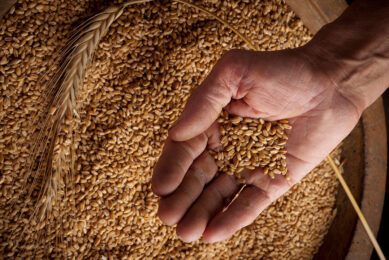Price pressure dominates volatile grain market

Grain prices remain highly volatile. Price pressure is currently prevailing on the grain market due to the uncertainties on the international market. Just as sharply as wheat prices rose after July 17, prices have fallen again since last week.
On July 17, Russia announced that it would not renew the grain deal with Ukraine. Russia then carried out missile strikes, claiming that they were on military infrastructure. But Ukrainian President Zelensky published images of a destroyed grain store. In the seaport of Odessa alone, 60,000 tons of grain seem to have been lost. This caused tensions, partly because it was unclear how Ukrainian grain could then be exported; resulting in sharply rising prices. Putting additional pressure on grain exports. Over the past week and a half, it became clear little by little that shipments from ports on the Danube and from the Sea of Azov in Russia still continue.
Weaker euro makes EU wheat more attractive
Furthermore, the exchange rate of the euro has weakened against the US dollar in recent weeks. This makes European wheat cheaper to sell on the world market. Falling prices make international trade more interesting.
Trade has picked up:
- Algeria has bought more than 700,000 tons of wheat from the Black Sea region for October delivery.
- Tunisia has announced a tender for 120,000 tons of wheat.
- Bangladesh is going for a second tender in the month of August.
- The Egyptian trade could not be left behind and the Egyptian purchasing agency Gasc announced several new tenders on August 1 for delivery spread over the month of September.
Delayed harvesting
In the Netherlands it is quiet on the market. Despite the changeable weather, wheat and barley came off the land fine last week. Threshing machines have been standing still for the past few days due to precipitation, so far the harvested grain has not been driven in dry. Growers hope to be able to return to the field soon.











